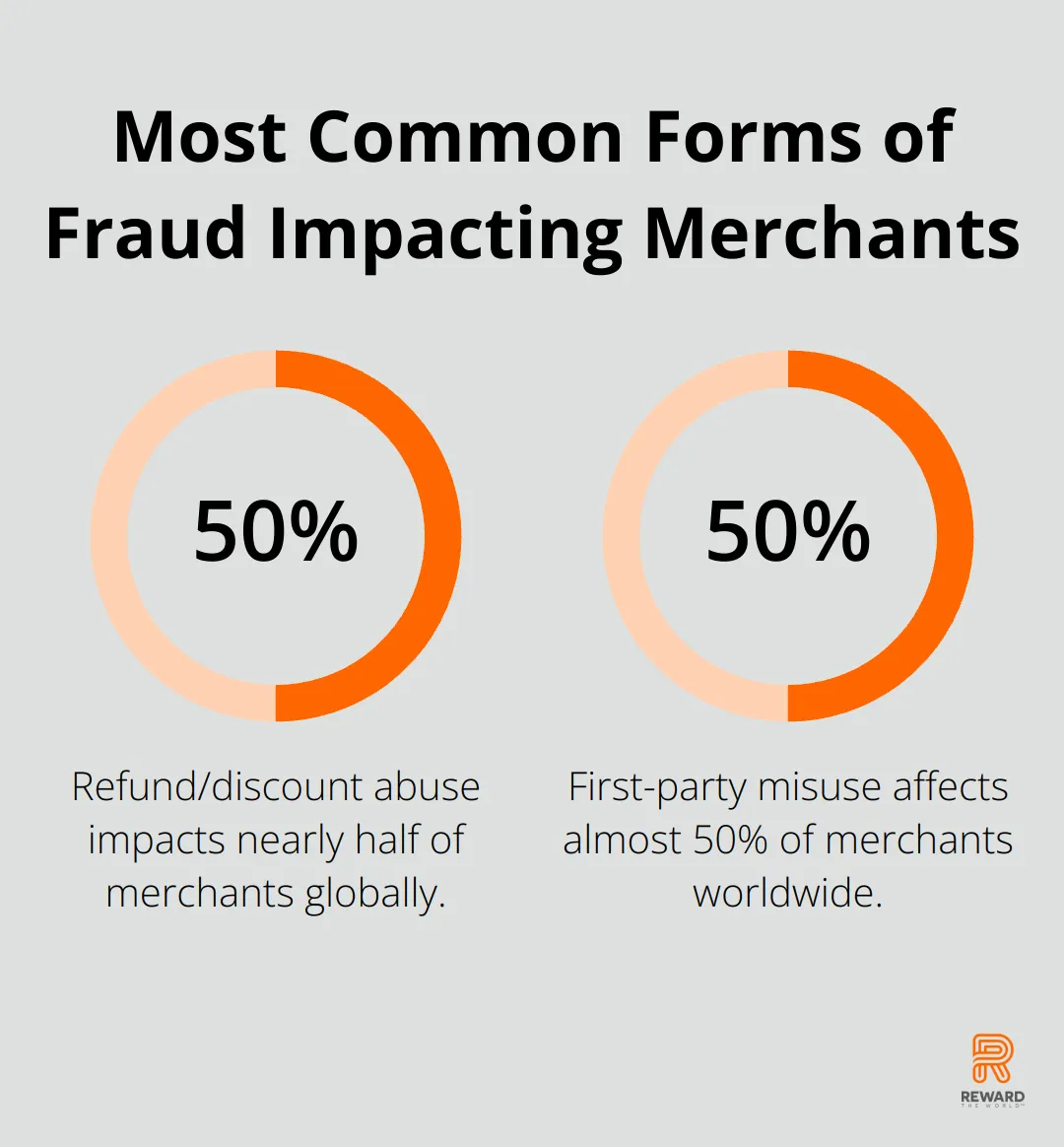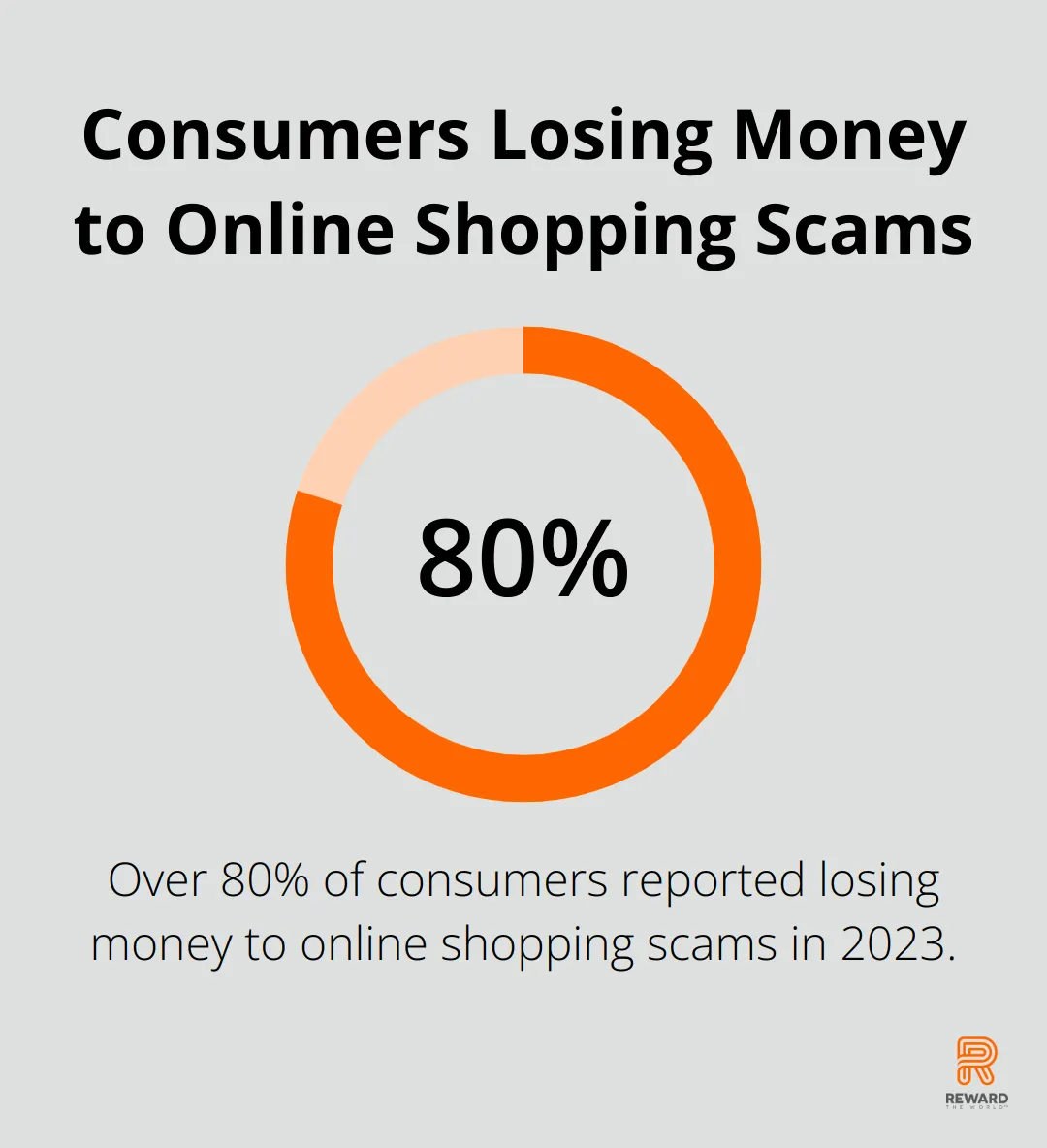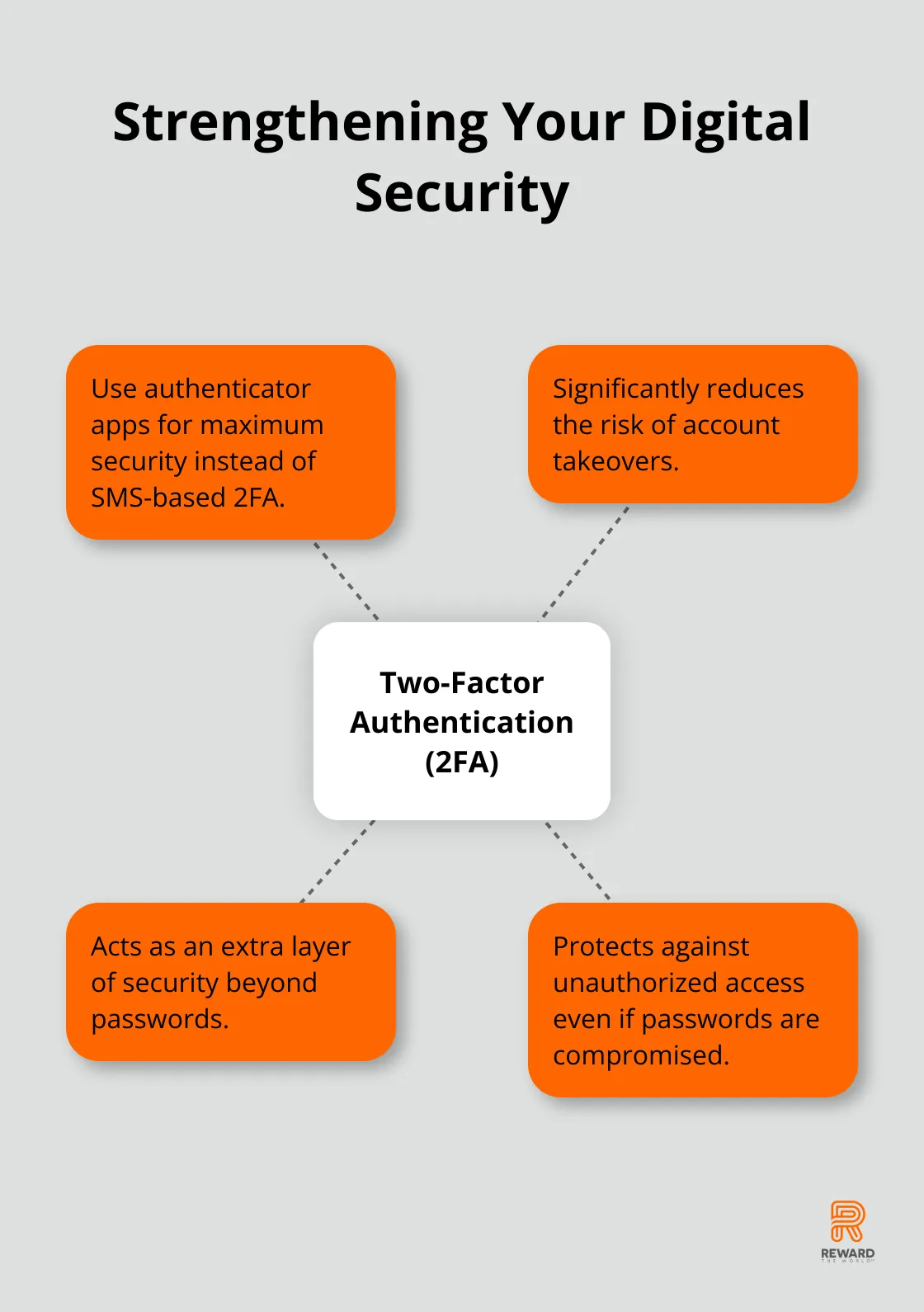
Digital scams have evolved rapidly, becoming more sophisticated and harder to detect. At Reward the World, we’ve seen a surge in loyalty fraud and other online scams targeting unsuspecting individuals.
In this post, we’ll explore the latest tactics used by scammers and provide practical tips to help you stay one step ahead. By understanding these threats and implementing robust security measures, you can protect yourself and your digital assets from cybercriminals.
How Digital Scams Have Transformed
From Simple Tricks to AI-Powered Deception
The landscape of digital scams has undergone a dramatic transformation over the past decade. The days of easily identifiable schemes, like the infamous Nigerian prince emails, are long gone. Today’s digital scams employ far more nuanced and technologically advanced methods.
Artificial Intelligence: A Double-Edged Sword
Artificial Intelligence (AI) has emerged as a powerful tool in the digital world, but it cuts both ways. While it enhances security measures, scammers also exploit its capabilities. With AI, they can generate thousands of personalized messages, fake profiles, or live chat responses in seconds, enabling real-time deception across multiple platforms.
The Rise of Loyalty Fraud and Account Takeovers
Loyalty program fraud has become a significant concern in recent years. The 2024 Global eCommerce Payments & Fraud Report revealed that refund/discount abuse and first-party misuse now top the list as the most common forms of fraud, each impacting nearly half of merchants globally. These trends highlight the need for robust security measures in reward systems and user accounts.

The Financial Toll of Digital Scams
The financial impact of these scams is substantial. This translates to significant losses for businesses, underscoring the urgent need for enhanced security measures across all digital platforms.
Social Engineering: Exploiting Human Trust
Despite technological advancements, many scams still rely heavily on social engineering tactics. Scammers excel at creating a sense of urgency and exploiting trust. This highlights the need for vigilance in our daily online interactions.
As digital scams continue to evolve and adapt, staying informed and implementing strong security measures becomes more important than ever. The next section will explore how to recognize the red flags of these sophisticated scams in our increasingly digital world.
Spotting Digital Scams: Warning Signs in the Digital Landscape
In today’s digital world, scammers employ increasingly sophisticated methods. To protect yourself, you must recognize key warning signs in your online interactions. This chapter outlines crucial red flags to watch for in emails, social engineering tactics, and online transactions.
Suspicious Email Characteristics
Your inbox often serves as the first point of entry for scammers. Pay close attention to these telltale signs:
- Sender’s email address: Scammers frequently use addresses that closely mimic legitimate ones. For example, you might receive an email from “amazon-support@gmail.com” instead of an official Amazon domain.
- Grammar and spelling: While not all legitimate emails are flawless, consistent mistakes often indicate a scam.
- Generic greetings: Be wary of “Dear Sir/Madam” instead of your name, especially if you have an account with the supposed sender. Phishing emails often use generic greetings like “Dear Customer,” “Dear User,” or “Hello,” because the attackers do not have access to your personal details.
- Urgent requests: Legitimate companies rarely ask for sensitive data via email or pressure you to act immediately under threat of account closure or financial loss.
Social Engineering Tactics
Social engineering exploits human psychology to trick you into divulging sensitive information or taking harmful actions. Watch out for these common techniques:
- False authority: Scammers may pose as government officials, tech support personnel, or high-ranking executives to manipulate you into compliance.
- Exploitation of current events: During crises (like the COVID-19 pandemic), scammers often create fraudulent schemes related to topical issues. Always verify such claims through official channels before taking any action.
- Targeted phishing: Scammers may use information from your social media profiles to craft personalized messages that appear legitimate. Exercise caution with unsolicited messages, even if they seem to come from someone you know.
Red Flags in Online Transactions
When shopping online or conducting financial transactions, vigilance is paramount. Look out for these warning signs:
-
- Too-good-to-be-true deals: In reports to BBB in 2023, over 80% of consumers said they lost money when encountering an online shopping scam.

- Unusual payment methods: Be skeptical of sellers who only accept payment through wire transfers or gift cards. These methods offer little to no buyer protection.
- Pressure to act quickly: Scammers often create a sense of urgency to prevent you from thoroughly researching their offer. Take your time to verify the legitimacy of any deal or transaction.
- Requests to move off-platform: Be wary of attempts to lure you away from secure platforms. Scammers often do this to avoid detection and bypass safety measures.
The Role of AI in Modern Scams
Artificial Intelligence (AI) has become a powerful tool for scammers. They use AI to:
- Generate personalized phishing messages at scale
- Create deepfake videos and voice clones for impersonation scams
- Develop more convincing chatbots for customer service fraud
Scammers can use AI voice cloning to try and gain access to victims’ financial accounts at institutions that use voice recognition prompts for security.
To protect yourself, try to verify the authenticity of any AI-generated content you encounter. Use official channels to confirm information and be skeptical of unsolicited communications, even if they appear highly personalized.
As scams continue to evolve, staying informed about these warning signs is your first line of defense. The next chapter will explore proactive measures you can take to fortify your digital security and stay one step ahead of scammers.
How to Outsmart Digital Scammers
Strengthen Your Digital Fortress
Start with robust password practices. Use a password manager to generate and store unique, complex passwords for each account. This step can thwart many common hacking attempts.
Turn on two-factor authentication (2FA) wherever possible. This extra security layer can significantly reduce account takeover risks. For maximum security, use authenticator apps instead of SMS-based 2FA.

Update your software and operating systems regularly. Cybercriminals often exploit known vulnerabilities in outdated software. Set your devices to update automatically to protect against the latest threats.
Master Digital Skepticism
Learn about the latest scam techniques. Follow reputable cybersecurity blogs and news sources to stay informed about emerging threats. The FTC’s Consumer Information blog provides up-to-date scam alerts and prevention tips.
Cultivate a healthy skepticism towards unsolicited communications. Verify the sender’s identity through official channels before acting on any unexpected email, text, or call. This habit can protect you from phishing attempts and social engineering tactics.
Question requests for personal information or urgent financial transactions. Legitimate organizations rarely ask for sensitive data via email or unsecured channels. Contact the company directly using their official website or phone number if in doubt.
Use Advanced Security Tools
Buy a comprehensive security suite (including antivirus, anti-malware, and firewall protection). Look for solutions that offer real-time threat detection and regular updates.
Try a virtual private network (VPN) when accessing public Wi-Fi networks. A VPN encrypts your internet traffic, making it harder for cybercriminals to intercept your data.
Install secure browsing extensions that alert you to potentially malicious websites. Tools like uBlock Origin or Privacy Badger can block trackers and potentially harmful scripts, enhancing your online safety.
Stay Informed and Adapt
Follow cybersecurity news and trends. Subscribe to reputable tech blogs, security forums, and government cybersecurity alerts. This knowledge will help you anticipate new threats and adjust your defenses accordingly.
Participate in online security workshops or webinars. Many organizations (including banks and tech companies) offer free educational resources to help users protect themselves online.
Review and update your security practices regularly. What worked last year might not be sufficient today. Set reminders to reassess your digital security measures every few months.
Final Thoughts
The digital landscape evolves rapidly, and scammers adapt their tactics to exploit new vulnerabilities. Vigilance and continuous learning are essential to protect yourself from sophisticated cyber threats. Implement strong security practices, such as unique passwords and two-factor authentication, to fortify your digital defenses against potential attacks.
Cultivate skepticism towards unsolicited communications and verify the authenticity of requests for personal information. Stay informed about the latest scam techniques by following reputable cybersecurity sources and participating in online security workshops. Regular reviews and updates of your security measures will help you maintain a strong defense against emerging threats.
At Reward the World, we prioritize the security of our global incentives platform to protect against loyalty fraud. We encourage you to share your cybersecurity knowledge with others, as collective awareness strengthens our digital community. Together, we can create a safer online environment and outsmart digital scammers in this ever-changing landscape.
